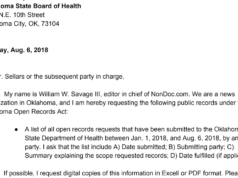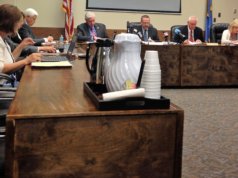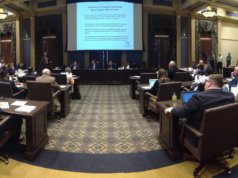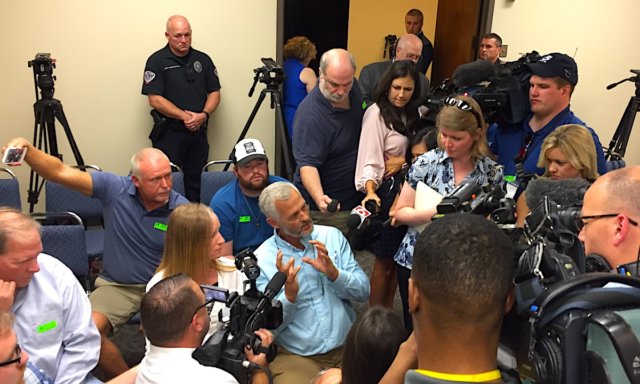

The Oklahoma Board of Health approved its emergency Medical Marijuana Authority rules shortly before noon today, making two substantial changes from the draft language: a functional prohibition on dispersement of smokable marijuana; and a requirement that a pharmacist be present during dispensing hours.
Medical marijuana advocates immediately called the last-minute rule amendments “annoying,” “questionable” and “challengeable.”
“Is it ‘overreach’?” New Health Solutions Oklahoma director Bud Scott asked rhetorically after the meeting. “I think it’s legally challengeable. Nowhere did it say how or what types of cannabis can be consumed in State Question 788, nor did it grant authority to make that decision.”
Oklahomans for Health co-founder Chip Paul called the board’s amendments “annoying” and said they “absolutely” run contrary to the will of voters who passed SQ 788 with about 57 percent of the vote two weeks ago.
“To have two board members come in with already prepared legal language to put in the regulations I think is somewhat interesting. And to do that against the advice of their legal counsel is also very interesting,” Paul said. “We at least now have a known program. So regardless of whether we all love it or hate it, we at least have structure under our framework that we put out under 788.”
But Scott said the Board of Health’s decision — which would prohibit the distribution of smokeable marijuana but would still allow for home-growers to smoke their product — is a perfect example of why his organization called for a special legislative session to create the programs in statute instead of agency rule.
“It’s not surprising. This is a move by some of the board members representing the Oklahoma health community and some members of the medical community,” Scott said. “It’s consistent with the positions they have taken throughout this campaign.”
The two major rule changes
Paul referenced Oklahoma State Department of Health general counsel Julie Ezell who gave an overview of the proposed rules before cautioning the board against making changes to the areas it ultimately did: 681 1-4 (definitions) and 681 2-11 (adherence to the Smoking in Public Places and Indoor Workplaces Act).
The changed language is highlighted on the following document:
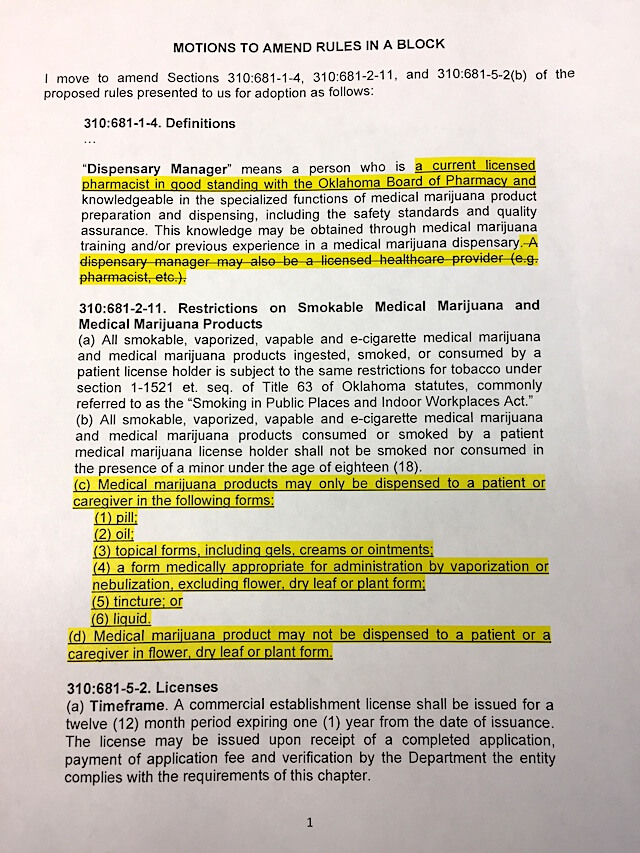
Board member Charles Skillings made the motion to prohibit the dispersement of smokable forms of medical marijuana, saying he believed it was best for the health of Oklahomans.
The motion ultimately passed 5-4, with members such as Dr. Chuck Grim opposing.
“I tend to agree with Julie when I read this law that it implies that smokable marijuana is appropriate,” Grim said. “I lay that out there.”
The full rules (embedded below but without the amended sections) were drafted by the OSDH and adjusted following a public comment period that featured more than 1,000 suggestions.
“We’ve instituted provisions related to laboratories that will be testing marijuana,” Ezell said when describing the rules at Tuesday’s meeting. “They will not only be testing for THC levels but also for pesticides, heavy metals, other types of toxins that can compromise safety.”
Ezell explained rules for home grow — six-foot fencing with lock and key that is not visible from a street — and public smoking consumption rules identical to where tobacco can currently be smoked.
“We have strict standards as to how that marijuana can be transported,” Ezell said, noting that a transportation license can also be held by those with a commercial establishment license.
After the meeting, interim Commissioner of Health Tom Bates addressed media, saying the board “did their job.”
“From the public comments that we received, I think there was some feeling that (…) to allow smokeable forms would be a step back in their role as protectors of public health in Oklahoma,” Bates said. “Certainly reasonable people can differ on that, and I absolutely respect their viewpoint and the decision they made.”
Asked multiple times what his position was on the matter, Bates declined to say whether he believed the board made the right decision.
“We didn’t chisel anything today in granite,” he said when asked about other elements of the emergency rules. “We will revisit some of these issues again.”
Asked whether the board went against the will of the people who passed SQ 788, Bates replied: “The state question was silent on that.”
Oklahoma medical associations get what they want
Monday, the Oklahoma State Medical Association and a host of other health care organizations called for the Board of Health to amend the proposed rules to ban the smoking of marijuana entirely, instead focusing on other methods of consumption.
Ultimately they were successful on that front and also in requiring a pharmacist to be present at dispensaries. But the board followed Ezell’s recommendation that they did not have the authority to cap the number of dispensary licenses, something the medical associations also sought.
Overview of medical marijuana rules
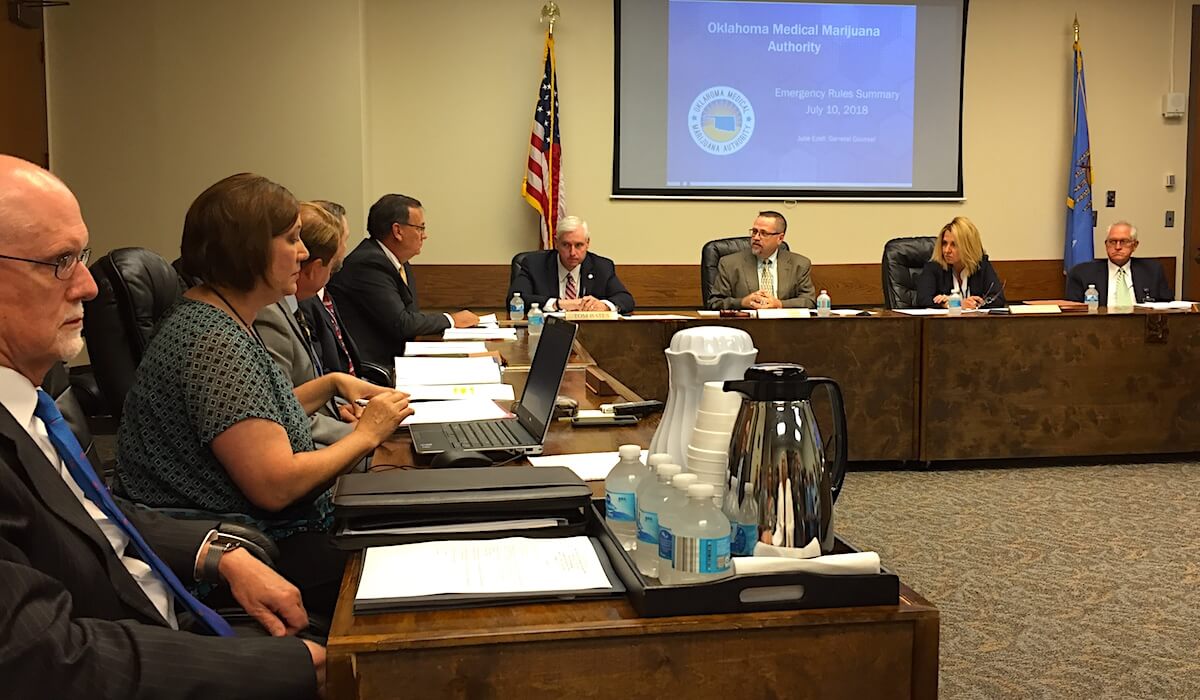
Over the weekend, the Oklahoma Medical Marijuana Authority posted a “final draft” of the 75-page document, as well as an explanation of 20 primary points:
Below is a summary of the proposed rules. All changes from the previous version posted for public comment are noted by an asterisk.
1. All recommendations for a patient to receive a medical marijuana license must be made by an Oklahoma Board Certified Physician. Only physicians who are licensed by either the Oklahoma Board of Medical Licensure and Supervision, or the Oklahoma Board of Osteopathic Examiners and meet the requirements of the Oklahoma Board of Medical Licensure and Supervision or the Oklahoma Board of Osteopathic Examiners to hold themselves out as “Board Certified” are eligible to make a recommendation for medical marijuana.
2. All physicians who plan to make recommendations for medical marijuana must register with the Department prior to making medical marijuana recommendations.
*3. All patients receiving a recommendation from their physician for medical marijuana must have that recommendation reviewed by their physician at least annually. Additionally, physicians must screen for substance abuse, mental health issues, and whether the patient presents a risk for the diversion of marijuana prior to making a recommendation for medical marijuana.
*4. Pregnancy tests are required before a physician makes recommendation for medical marijuana to female of childbearing years. The rules require the physician to consider a woman’s pregnancy status and the potential risk to an unborn child when recommending medical marijuana to a pregnant woman.
*5. Recommendations for medical marijuana for minor patients must be made by either a pediatrician or one a physician with a board certification in a pediatric specialty.
*6. Patient license holders can appoint a caregiver if they are unable to ambulate or meet other criteria. The caregiver will receive a license from the Department and may obtain medical marijuana from the dispensary on behalf of the patient. All patient and caregiver licenses are valid for two years, subject to restrictions.
7. All patient license holders are eligible to home grow their own marijuana subject to the limitations on amounts imposed by the state question. All home grown medical marijuana must be behind a fence under lock and key and not visible from any street.
8. Medical marijuana may be sold in smokable form, but the same restrictions on public consumption of tobacco will be applied to marijuana.
9. All transporters of medical marijuana must have a transport license.
10. Per state statutory requirements, all growers, processors and dispensaries must register with the Oklahoma Bureau of Narcotics and Dangerous Drugs as due to the fact that marijuana is a ‘controlled dangerous substance’ under the law.
*11. All dispensaries will be required to have a Dispensary Manager who will dispense medical marijuana, advise patients, track inventory, and ensure the dispensing of medical marijuana complies with the applicable rules.
*12. Individuals/entities may own/operate a dispensary, processor, and growing operation. They are not restricted to one establishment.
*13. Listed requirements for dispensers, processors, and growers when advertising medical marijuana.
*14. Listed requirements for Inventory control/tracking of medical marijuana for all dispensaries, processors, and growers.
*15. Listed requirements and guidelines for the processing of medical marijuana both by the licensed processor, as well as the patient who chooses to process their own marijuana.
*16. Medical marijuana grown by a commercial grower can only be grown indoors.
17. Stringent testing requirements for all processed marijuana and medical marijuana products.
18. Stringent labeling requirements for all medical marijuana products sold at a dispensary.
19. A single serving of a medical marijuana product processed or dispensed shall not exceed ten (10) milligrams active tetrahydrocannabinol (THC) Medical marijuana products and Medical Marijuana Concentrate processed or dispensed shall have a THC content of not more than twelve percent (12%). Mature marijuana plants shall have a THC content of not more than twenty percent (20%).
20. Standards for the disposal of unused medical marijuana and medical marijuana waste.
As stated above, that summary and the document below do not reflect the amendments passed Tuesday.
Medical marijuana rules
